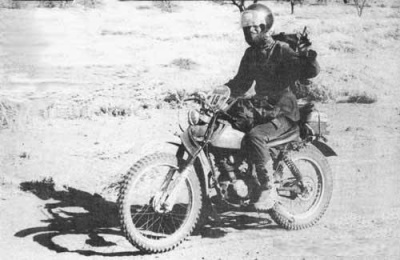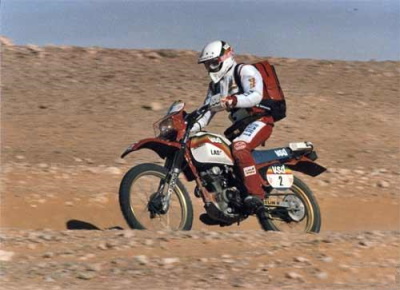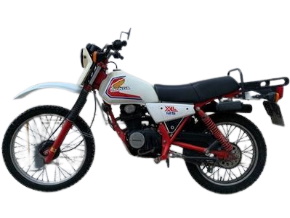
Presentation of the HONDA XLS 125
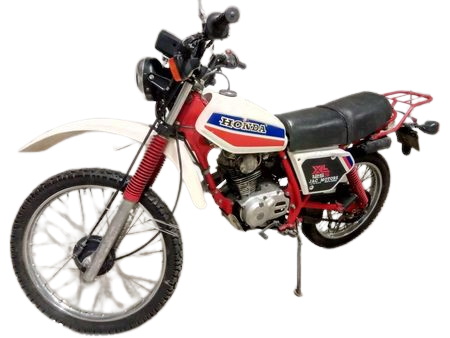
The HONDA XLS 125, reliability and robustness
Facing the HONDA 125 DT/MX, which dominates the market, Honda is the only manufacturer to offer a trail 125cc single-cylinder four-stroke. The famous 3 SL, born in 125, the first Honda off-roader imported into France, enjoyed considerable success and convinced customers thanks to its reliability. © and a perfect aptitude for urban journeys as well as all-road rides.
The XL, unveiled at the end of 1975, uses the same recipe by modernizing it and will know the same success until its replacement, in 1978, par the XL-S more aesthetically aggressive and equipped with longer travel suspensions, but also heavier without having gained in power, its mechanics remaining the same except for a few details .
The evolution of the model
La XL 125 S is a model of the manufacturer Honda, belonging to the family of Honda XL.
The main developments par compared to the 125XL are:
Engine: a 6e speed and modification of the alternator and ignition (a CDI replaces the old switch system, the advance still being managed)ar a centrifugal mechanism). Modified cylinder head with larger valves. These modifications allow a slight gain in torque and power.
Cycle part: a single open cradle frame replaces the double cradle. The suspensions are modified with greater travel for easier off-road use.
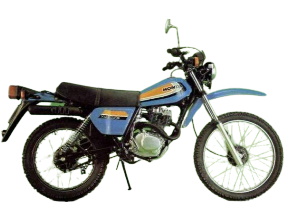
1st release XLS 125 Type Z
More often nicknamed the "XLS" or "125 XLS", it is the first version of this range. It is called Type Z in the official numbering.
- Chain tension par tie rods.
Color
- White elements, with red frame. Tank decorations in black, blue and red comma.
- Red elements, with black frame. Tank decorations in black, silver gray and yellow comma.
- Blue elements, with black frame. Tank decorations in black, silver gray and yellow comma.
- Black saddle.
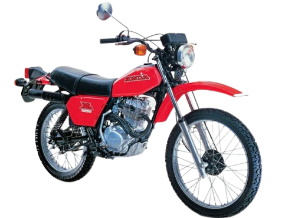
2nd version XLS 125 Type A
Color
- White elements, with red frame. Black, red and orange horizontal tank decorations.
- White elements, with black frame. Black, turquoise and blue horizontal tank decorations.
- Red elements, with red frame. Black, blue and white horizontal tank decors.
- Black saddle.
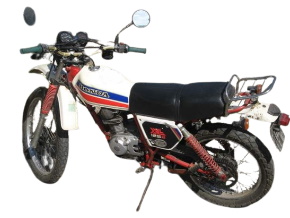
3nd version XLS 125 Type B
Fork gaiters, fork shock absorbers with superimposed springs, chain tension par thrust screw. Rectifier/regulator instead of a simple rectifier and new alternator stator with external ground. Stacked fork springs.
Color
- Black frame and elements.
- Red frame and elements.
- Red frame and white elements.
- Black saddle.
4nd version XLS 125 Type C 1982
Color
Similar to type B with new decorations on the tank and the side covers. The engine is painted black.
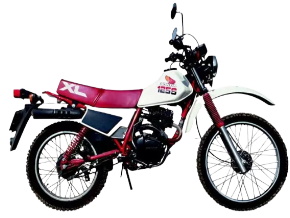
5nd version XLS 125 Type F
Chain tension par tie rods. New rear light and new side covers.
Color
- Red frame.
- Red with blue saddle.
- White with red seat.
- Black with red seat.
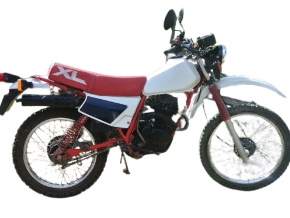
6nd version XLS 125 Type H
Color
- Black, red, white elements with red frame.
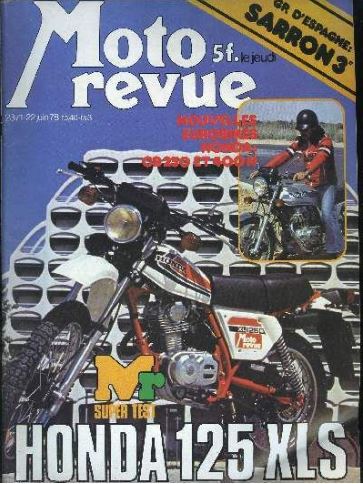
The reliability, the maintenance of the Honda XLS 125
The solidity of mono is proverbial, it requires a minimum of maintenance to be confirmed. Thus, particular attention should be paid to frequent oil changes, with an oil of good viscosity. The ideal is a semi-synthetic 15W50, but for the frugal, a mineral base in 20W50 is perfectly suitable, respecting intervals of 1500-2000 km.
Every 10 thousand km, it is necessary to clean the centrifugal purifier which concentrates the impurities in a small bell located behind the clutch housing. Be careful, this very often neglected operation can lead to clogging of the lubrication circuit which will first be detrimental to the top of the engine and the camshaft and crankshaft bearings.
The timing chain must be tightened as soon as it becomes noisy. Failing this, it becomes excessively loose causing premature wear, that of the runners which guide it and of the aluminum which surrounds it. To proceed, simply run the engine at a warm idle and loosen the lock nut located at the base of the cylinder, wait a few seconds and retighten it. It may still be noisy due to the tensioner spring sagging. In this case, with a small 4,5mm screw screwed into the rod of the tensioner (removing the plug with a 10mm wrench), it can be helped to go up.
The CDI ignition does not require anything as long as the factory settings have not been modified. Sometimes, however, the centrifugal advance with age is a little deficient. The carburettor only requires intervention in the event of a malfunction.
The jaws are to be replaced approximately every 15000 km, so that the braking gives at least an illusion. The long secondary chain is rarely of quality, it requires adjustment of its tension every 500 km with greasing. Its replacement will be around the 10000 kilometers, which is a good opportunity to shorten the final gearing from 14/47 to 14/52, which is much more suitable. Some may even opt for a 13-tooth sprocket.
Do not forget to drain the fork, not hesitating to put a little more oil than the 150 ml indicated (160 for models after 1981). The rear shocks are quite durable.
LA XLS 125 in competition
Reliability, sturdiness, have prompted some daring motorcyclists to undertake some great races on their Honda XLS 125.
In 1979: Grégoire Verhaegue, the youngest entry in the rally with the smallest cubic capacity. The motorcycle had more than 70000 km on the clock before leaving Paris and will arrive in Dakar after many adventures!
In 1985: Gérard Barbezant on a 125 XLS Honda prepared in 15 d between 10 and 25 December 84. The bike was as far as Agades and had to give up after abandoning assistance after a fall where it had broken the crown.
Nowadays, Greg Gilson, a seasoned and passionate enduro rider, wants to show that pleasure on a motorcycle is in no way proportional to the number of horses between your legs. In short, no need to spend a fortune on a motorcycle to use only 20% of its real capacity on a daily basis. In 2019, Greg Gilson came through with the Rallye from Morocco in category Enduro on the handlebars of a Honda 125 XLS and especially with a broken collarbone with 3 km to go. He participates throughout the year in various races, always on his Honda XLS 125.
